This is a story of everyday researchers and teachers, struggling to do their job in a world pervaded by management bollocks.
This page is a continuation of the diary that started in June 2007, with the demise of UCL’s Pharmacology department (for the time being). It continued
- from June 2008 to May 2009 on a separate page.
- From June 2009 to May 2010
- From June 2010 to May 2011
- From June 2011 to May 2012
- From June 2012 to May 2013
- From June 2013 to May 2014
Now we continue from June 2014.
Links. Most items on this page can be linked directly by appending the date to the page link. For example https://www.dcscience.net/?page_id=6624#070614 takes you directly to the entry for 7 June 2014.
3 June 2014
Old friend, Jonathan Ashmore, came to record an oral history for the History and Archives group of Physiological Society. This sort of thing happens more often as one gets older.
7 June 2014
Went to a concert ar the Royal Festival Hall, one of a series prompted by the refurbishment of its magnificent 8000 pipe organ. The organist, Stephen Disley started at Liverpool Cathedral, so was well known to my sister who was, for many years, in the cathedral choir.
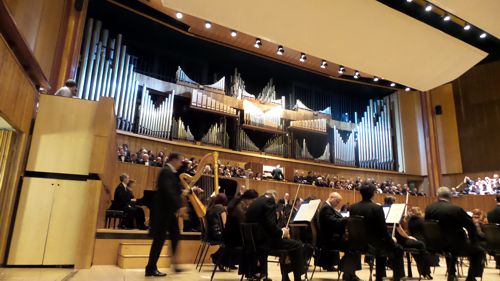
The programme had every popular organ piece in the book. Amazingly, the Widor Toccata had an orchestral accompaniment -never heard that before and it rather spoiled it for me. Also, the first pedal entrance sounded a bit harsh to me (compared with the Liverpool Cathedral organ, for example, or with Widor’s own performance, in 1932 when he was 88). Disley had studied at St Sulpice in Paris, where Widor had been organist. Another great piece was Saint Saens’ Organ Symphony (the finale only -as bad as Classic FM). The piano part was played by Roderick Elms, with whom my wife often competed against at music festivals in the 1960s (and she often won too). She played the piano part in the Saint Saens herself, but in Kingston Parish Church, not the Festival Hall.
20 June 2104
I was quite surprised to be asked to take part in a religious programme, in a series called Things Unseen. You can hear or download the podcast there. Or listen now.
The other speakers were Islamic cupper, Ashiq Hussain, and Harley street Ayurvedic lifestyle consultant, Vijay Murthy. The best evidence that they could produce was that Victoria Beckham allegedly likes it. The conversation verged on the surreal.
Them: “when you are doing hijam you are eliminating toxins from the system” . “As a Muslim we believe that Mohammed, peace be upon him, prescribed hijama as . a gift by almighty God”.
Me. “cupping is pure make-believe -made up nonsense”. “-usual detox nonsense”. “a voluntary tax on the gullible” (that’s stolen from Ben Goldacre -I use it a lot)
2 July 2014
The annual soiree at the Royal Society to see the summer science exhibition. Highlight for me was meeting David Spiegelhalter for first time in real life. He was very heloful iwhen i was writing my second post on the alleged risk of eating red meat.
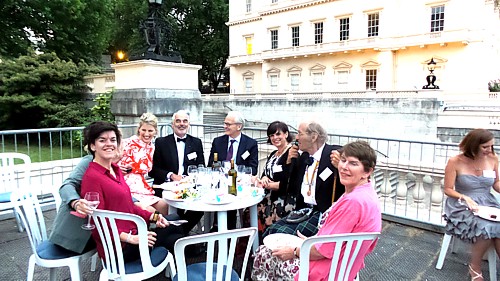
I was less entranced by the ability of this gorgeous dog to sniff out cancer. His handler explained that the dog’s ability had been verified by the Prince of Wales and Karol Sikora. Someone should tell him that that’s not the way to convince people. It’s worrying when the Royal Society supports woo.
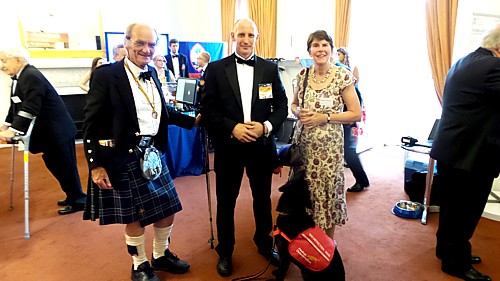
The invitation says that “decorations will be worn”, so I wore my London Marathon medal as usual. Nobody was pompous enough to object (so far).
15 July 2014
Video of panel session on science communication now on YouTube. From Circling the Square meeting (20 May).
16 July 2014
My real scientific interests rarely feature on this blog. Here is a movie in which I try to explain some of them, without the help of any diagrams (a hopeless task). I tried to persuade Lucia Sivilotti and Remigijus Lape to appear on the film, but they were too modest to agree. If anyone is interested, two crucial papers are Burzomato, V., Beato, M., Groot-Kormelink, P., Colquhoun, D. & Sivilotti, L.G. (2004), and Remigijus Lape, David Colquhoun & Lucia Sivilotti (2008)
23 July 2014
Left for a 10 day rail tour of Germany. It included four days in Wernigerode, in the Harz mountains. The narrow gauge railway took us to the top of the Brocken. It isn’t far from Göttingen, but I could not go to the Brocken while working there, because it was in East Germany. Before reunification in 1991 all you could do was look at it over the wall. The Brocken has some fascinating statistical associations which will be the subject of a blog, coming soon. Meanwhile here are some holiday pictures (click picture for an album). On Sunday 26th we spent the day with Erwin Neher and saw his water mill.
I was invited by VICE media to give opinions about herbal aphrodisiacs. I’d expected a plushy media studio, but it was filmed in the kitchen of a tiny flat, above a barber’s shop, in Clapton (north of Hackney). A table was spread with asparagus, cheese fondue, strawberries, chocolate and other alleged aphrodisiac foods. And bottles of horny goat weed and other pills from Holland & Barrett. I duly debunked the lot of them.
9 August 2014
Michael Quinion writes a wonderful newsletter about the origins of words. He did some investigation of the use of the term ‘blood cleanser’ at a time when I was having trouble from some herbalists. The current newsletter has a section on the word ‘corybantic’. But it failed to mention Archy and Mehitabel. These wonderful poems about Mehitabel. the corybantic alley cat, are the only time I’ve heard that word used.
Both my boats were named after Mehitabel, the corybantic alley cat immortalised in free verse by her Boswell, the cockroach, Archy, who had the soul of a vers libre poet, but was unable to reach the shift key.
You can find text of some of the poems at Archy & Mehitabel, by Don Marquis
Here is a taste.
the song of mehitabelBy Don Marquis, in “archy and mehitabel,” 1927 this is the song of mehitabel i have had my ups and downs do you think that i would change – boss sometimes I think |
10 August 2014
Tonight was a ‘super-moon’. The moon is at its perigee. It’s about 14 per cent closer and 30 per cent brighter than when it’s at its furthest point from earth. This is the best picture I managed

(Samsung Galaxy 2 camera, 21x optical zoom, 1/1000 sec, f 5.6)
18 August 2014
During the visit to Krakow in April, the organisers asked me to do an interview with a Polish journalist. It eventually appeared in Gazeta Wyborcza. The Google translation is dreadful.
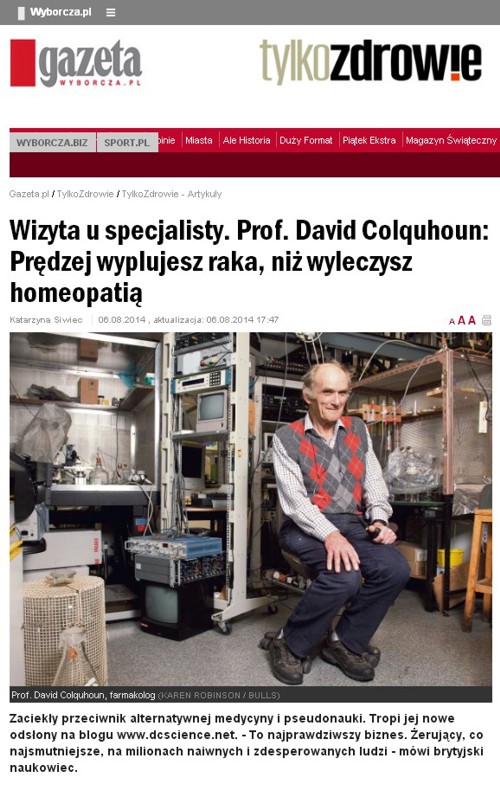
24 August 2014
Two roses (click for high resolution versions)
27 August 2014
Got a call at midday to ask if I could appear on BBC Newsnight. They wanted me to talk about the Cancer Drugs Fund. It’s a nice change from quackery. So I spent the afternoon checking on things like Roche’s profits. I also checked with Michael Baum, the recently-retired cancer surgeon whose views I respect enormously. He provided me with the perfect opening line for Newsnight “It’s a political stunt in response to shroud-waving by big pharma”. I was on with Karol Sikora, who seems to be the BBC’s default choice. Sikora has a long track record of supporting quackery, but this time we were more-or-less on the same side. One topic was the breast cancer drug, Kadcyla, for which Roche asks £166,000 per QALy. I was amused that throughout the interview Sikora mispronounced Kadcyla. as Kadcycla. I was too late to encounter Jeremy Paxman, but Laura Kuenssberg was a fair host [click the picture for the video].
3 – 4 September 2014
Off on train to St Andrews. Arrived mid-afternoon. I was entertained excellently to dinner at the Doll’s House restaurant, by Silva Paracchini (Italian) and Melissa Andrews (American). James Naismith, who’d invited me, had to be absent for a funeral. Silvia had a vote in the referendum (but I don’t).
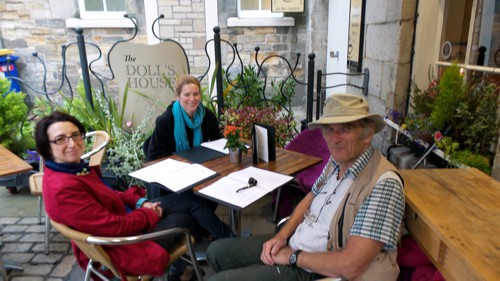
On 4 Sept I spoke under the title “Improbable Science and its Miscommunication”. The largish theatre was almost full and I was delighted by the idealism of young scientists (and some old ones) who seem to be grateful that I say things which they would like to say, but dare not because, rightly of wrongly, they fear that it would harm their career.
Back on the afternoon train. When I was working in Edinburgh I’d often take the 4 pm train to London (the Talisman) and dinner would be served in the restaurant car (even for 2nd class passengers) while passing the beautiful bit of coast near Durham, Now even in first class you get a sandwich in your seat. Here’s a rather woolly view of Durham (high zoom, fast train).

7 September 2014
Spent Sunday evening doing a long interview for a Polish TV programme, Dzien Dobry TVN (the largest morning television show in Poland). It’s been dubbed in Polish (how accurately, I have no idea).
19 September 2014
I went to the “H3 symposium: Public Engagement as a ’Pathway to Impact’ “. My opinions on “pathways to impact” were made clear a while ago.
My contribution was a short talk on “The thin line between public engagement and PR”t is on line at (starting at 1 hr 25 min). It’s not one of my best performances so not worth watching. All the material is on this blog anyway (see ).
The meeting was quite enlightening for me, because it showed the gulf that exists between corporate engagement and individual bloggers. I didn’t hear in any of the talks a single reference to blogs, and not a single reference to critical thinking. They were mostly engaged in entirely meritorious things like shows for school children to interest them in science. Some were employed by research groups to publicise the work of the group, None were engaged in encouraging critical thinking, which is the main aim of dcscience.net. They had barely heard of Ben Goldacre (or this blog). I guess we need both approaches but there is a problem with corporate activities because they can never really be critical about anything.
28 September 2014
Sunday morning walk (such as it now is) along the Thames. Amazingly warm, calm day (23° by midday). The picture, taken at 12.44, fails to convey the warm glow of the autumn sun, low in the sky.
7 October 2014
Went to Brighton to contribute to the meeting of the Independent Review of of the role of metrics in research assessment. The report of this group will be used by HEFCE to decide about the role, if any, of metrics in the next research assessment. I submitted an opinion to the committee earlier. The chair of that review. James Wilsdon organised a good meeting at which all views were represented. Unlike some previous meetings it wan’t (solely) a sales meeting for commercial publishers who are trying to sel their expensive products to universities.
There is an account of the meeting in tweets.
Two contributions stood out for me. One was from Meera Sabaratnam, from the School of African and Oriental Studies. She was one of the very few representatives of the humanities there, and spoke superbly. Her blog, Why Metrics Cannot Measure Research Quality: A Response to the HEFCE Consultation, is well-argued. It quickly attracted many supporters, and a follow-up post.
The other fascinating talk was from Dorothy Bishop (@deevybee). I agree with her about most things, but not her proposal to use the departmental h-index. as a surrogate for quality. I disagreed parlty because the correlation of h-index with departmental income was far from perfect (r2 = 0.7 was very far from perfect. But mainly because of the appalling pressure that would be put on academics to improve their h-index if this policy were adopted. But at the meeting, she pointed out that the number of people in the department was correlated even more closely with income from HEFCE r2 > 0.8. This implies that every staff member submitted is of much the same quality. Addition of the h-index produced only a small increase in predictive ability. That suggests to me the simplest of all solutions might do. Just give the same amount for each staff member. All you’d have to do is devise a system to stop people from cheating by submitting the departmental cat, or hiring people for the assessent period and then firing them soon afterwards.
Such a system would save the huge waste if money and time caused by the present research assessment. It would also make redundant the horde of companies which want to sell universities their metrics products. What’s not to love? These ideas are discussed on Stephen Curry’s blog, and on Dorothy Bishop’s account of the meeting.
Incidentally, there was much talk at the meeting about the "gaming" of metrics. This seems to me to be a euphemism for cheating. If an undergraduate cheats, big trouble follows. If academics cheat. they call it gaming. That just won’t do.
15 October 2014
Drove to Oxford to give talk to Magdalen College’s Sherrington Society. The header picture comes from a 2010 interview on the BBC News channel, with homeopathic doctor, Charlotte Mendes Da Costa. There was a good audience for “We know little about the effect of diet on health. That’s why so much is written about it”. Then we had dinner at high table. However many college dinners I go to, I can never get used to the pomp and flummery. I don’t think I’d survive for ten minutes in that sort of atmosphere.
21 October 2014
Got a call from RT TV (UK) asking me speak on the Saatchi Bill. That was a pleasure. Here it is (done from home, on Skype).
Lord Saatchi’s Bill would allow allow uncontrolled testing of treatments on any patient. It is not limited to cancer, nor to terminally ill patients (though some amendments, yet to be accepted, might change that). This sort of uncontrolled experimentation is likely to impede advances in treatment rather than to help them. And the vagueness of the wording of the bill could lead to an increase in litigation, rather than the intended decrease.
It is no coincidence that the legion of cancer quacks is in favour of the bill. It opens the door to their nonsense. Big pharma is likely to benefit too, because they will be able to sell improperly tested drugs with little or no effectiveness
For more information about the Bill, see http://www.stopthesaatchibill.co.uk/
See also Saatchi’s ‘Medical Innovation Bill’ will benefit lawyers and charlatans, not patients, by neurologist David Nicholl.
For more information about RT TV see http://en.wikipedia.org/wiki/RT_(TV_network) Although funded by Russia there was no Russian angle in this discussion.
24 October 2014
Saatchi Bill again, this time on the flagship Radio 4 morning news programme, Today. It was only a 3 minute interview with Mishal Husain, but it was unapposed so I managed to get in the main points.
![]() Click to play interview
Click to play interview
The Saatchi bill problem is now a fulll post, The Saatchi bill won’t find a cure for cancer, but it will encourage charlatans.
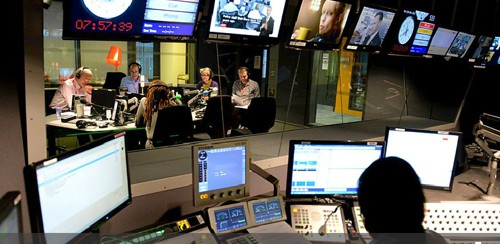
The BBC is good at driving you to/from the studio, but cars are unnecessarily posh. On the way home, I had my first ever ride in an all-electric Tesla. It does 0 – 60 in 4.2 seconds but costs £50k -more than twice the price of a Prius.

|

|
2 November 2014
I noticed a sudden surge in hits on the Patients’ Guide to Magic Medicine. On the three days (31 Oct – Nov 2) it was loaded over 7000 times. That’s a good proportion of the 18,000 views it’s had since it was posted over five years ago (May 2009).
|
The source of the hits turned out to be from a link on the quaintly-named page of the Facebook community., “I fucking hate pseudoscience“. They must have a lot of readers. |
But that was just the beginning. Monday Nov 3 saw 21,000 hits, and on Tuesday Nov 4 there was another 17,000 . The Patients’ Guide has now overtaken Acupuncture is a theatrical placebo: the end of a myth. with 36,000 views, as the most viewed page on this blog.
Most people seem to browse at work. On Monday the total hits on this blog peaked at 24,374 in 24 hours. The Patients’Guide is now by far the most viewed post =well over 67,000 (I didn’t have Google Analytics installed until three years after it was first posted (May 2009).
22 November 2014
Brain Magazine UK has produced a podcast. It was based on a rather long interview with Dr Paul Farrow. He’s a neuroscientist who came to our 2013 course on matrix algebra for single ion channels (picture here). It was good to meet him again. There is a blog, a bit of video and a long audio. I managed to use the F word (at 2’14" in the short video, 37 min in the audio, and at 36 min in full video)
The full length (1 hour) video interview is now on Youtube.
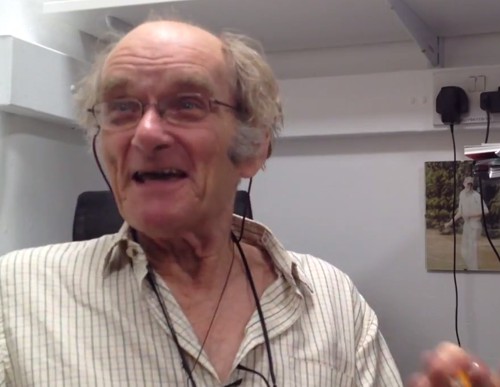
24 November 2014
An interview for a Swiss radio programme appeared. It was about false discovery rates and glamour journals.
![]() Listen to the interview (in German)
Listen to the interview (in German)
24 November 2014
An interview for a Swiss radio programme appeared. It was about false discovery rates and glamour journals.
![]() Listen to the interview (in German)
Listen to the interview (in German)
1 December 2014
I decided to post the last email of Stefan Grimm. He’s the 51 year old professor at Imperial College London who appears to have committed suicide because he was threatened with being fired because his research wasn’t expensive enough. It went viral in a way that I’ve never seen At one point it was getting e new hit every second, from all over the world. In a couple of days it became my most viewed post ever. By Christmas eve it had more than 160.000 views from over 200 countries. Meanwhile Imperial tried (unsuccessfully) to pretend nothing had happened. In my view this incident has brought to a head the ever-growing anger at the way science is being corrupted. Another post followed on December 23rd with examples of bullying from the large number of emails that followed the first post.
The indignation engendered by writing these posts led me to write tweets that border on the vicious, but which are well deserved.
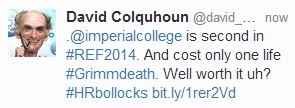
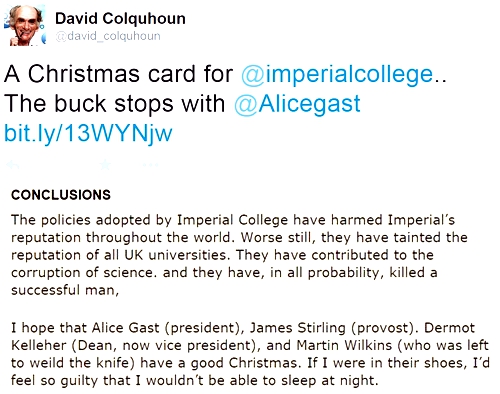
12 December 2014
Wrnt to Cardiff because I’d been asked to talk to their postgraduate student society. I talked about the Miscommunication of Science. They seemed to be grateful to hear someone old saying that you don’t have to respect your elders but not betters, especially when they collude in hype. I get more pleasure from being appreciated by people so early in their scientific lives that I get from the old folk in the Royal Society.
14 December 2014
Interview on Radio 5 live about over-treatment and over-diagnosis. It was far too short (and not helped by my accidentally hitting mute button on headset). The other person being interviewed was Joanna Zakrzewska who specialises in maxillofacial pain. Sadly she started by advocated acupuncture (I’ve sent her the link to Acupuncture is a theatrical placebo: end of a myth). Curiously, given the topic was "too many drugs", she grumbled that patients did not always take the drugs that they were prescribed. Not for the first time, I’ve wondered about the effectiveness of the psychological counselling that pain clinics offer. When my back hurts it’s bloody painful, and not to do with my psychological attitude to pain. If pain clinics could cure pain, I guess pain would not be the huge problem that it is. But I wonder if it might be better if they stopped exaggerating what they can do.
One of the presenters, Rachel Burden, said many ills were because if lifestyle choices and prevention was better and cheaper than cure. Well it would be if we knew how to prevent things. In fact much of your fate is pure luck -the John Snow lecture, by George Davey Smith has the details.
There is good stuff about over-treatment from Iona Heath, Peter Gøtzsche and Margaret McCartney. This cartoon, by Hilda Bastian, summarizes many of the problems.
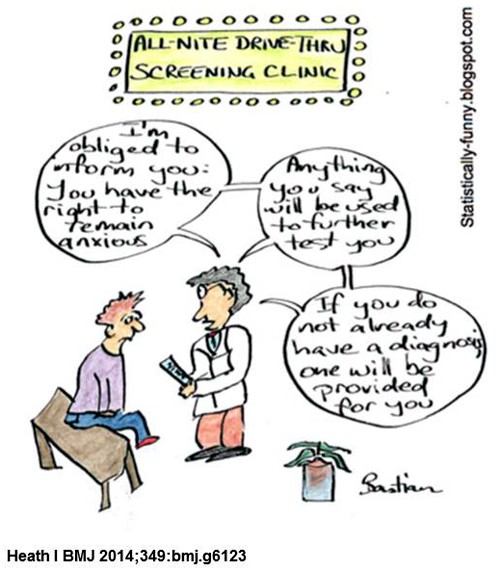
23 December 2014
I see that UCL has posted an edited version of the "impact" statement that was submitted by UCL to the 2014 REF. It’s at http://www.ucl.ac.uk/impact/case-study-repository/critical-evaluation-of-alternative-therapies
6 January 2015
My favourite work topic, stochastic processes, hit the headlines for two days running.
Cancer: bad genes or bad luck?
Tomasetti and Vogelstein came to the conclusion that in many cases, the largest cause of cancers is simply bad luck, caused by stochastic errors in cell division, rather than any controllable environmental factors. This paper came under heavy attack from several quarters, not least Grrl Scientist and Bob O’Hara.
http://www.theguardian.com/…/bad-luck-bad-journalism-and-ca…
I found myself in the unusual position of defending a paper in Science, and the journalists who reported on it. Then I found that . Pz Myers had done an excellent job of defending the main conclusions of the paper.
http://freethoughtblogs.com/…/03/cancer-bad-genes-or-bad-l…/.
Shortly afterwards the oncologist and skeptic, David Gorski, posted another good response, Is cancer due mostly to bad luck?
I’m still puzzled about why some people seem so indignant about the idea that much of your fate is sheer luck. It is hardly a new idea. George Davey Smith’s John Snow lecture gave an excellent summary, and he pointed out to me that the topic had been discussed in 1977, by Richard Peto (reprint, via GDS).
The only people who stand to lose by the idea are those eager to sell you (largely fraudulent) “cancer-preventing” diets’.
Queuing for beds
Once again, the news headlines were dominated by long queues at accident and emergency departments and lack of beds. So I used twitter to link to a 2009 post, Queueing for beds, Andrei Andreevich Markov , and why I still love the NHS. The random (stochastic) arrival times, and random lengths of stays in hospital give rise to interesting predictions, not all of them obvious, If you want to turn patients away rarely you need more beds than you might guess. If you are operating near saturation, you will inevitably have to wait a long time, and turn away many patients. This quickly got 250 extra hits for the old post, partly because Christopher Cook (policy editor for BBC Newsnight) seemed to appreciate the elegance of the maths.
12 January 2015 Went to here Skeptics in the Pub Mark Burnley on The Skeptics guide to drugs in sport. Mucj of it was about the great Lance Armstrong scandal (strangely enougj, I was in the process of reading a chapter of Steve Jones’ forthcomimg book on the French Revolution which deals with related questions). It takes all the fun out of sport when so many people are cheating. It’s only a bloody game.
23 January 2015.
Met Chris van Tulleken for lunch at UCL. The meeting was triggered by some rather critical tweets from me about his TV diet programmes What’s the right diet for you. This was a Horizon special, in three 1 hour episodes. At the start, the volunteers were divided into three groups, ’emotional eaters’, ‘constant-cravers’ and ‘feasters’. Each group was allocated a diet that was, allegedly, appropriate for them. After three months that’d all lost weight. But this says nothing about whether the initial allocation to groups helped at all. In order to test that. you’d have had to allocate people randomly to the "wrong" diet. They might have lost just the same amount of weight. If that happened, the "personalisation" would be no more than make-believe.
Chris van Tulleken was a charming and intersting man (@DoctorChrisVT on twiiter). He agreed entirely with my criticisms, despite what was claimed on TV. That does raise a problem about whether it’s permissible to use obviously faulty experiments for the sake of making “good” TV.
5 February 2015
Does too much jogging harm you?
Here are some comments on a recent paper, “Dose of Jogging and Long-Term Mortality“.
This paper purported to show that “strenuous” jogging was no better for you than none at all, whereas light (very light) joggng had a large benefit. In my opinion, this conclusion was without foundation. Here is an edited version of comments that I sent to Rosi Sexton. and put on my Facebook page.
I’d like to do a proper blog post about exercise, along the lines of those I’ve done about diet. That will take a lot more reading. My guess is that, like diet, exercise isn’t the panacea that it’s currently fashionable to claim. The lack of long term RCTs means that we just don’t know.
First it isn’t randomised so it can’t show causality. Unless exercise is the cause of the differences in mortality, then starting (or stopping) exercise won’t have the slightest effect on mortality. In the usual sleight of hand of observational epidemiologists, they admit this (under limitations) but then go on to make recommendations as though causality had been shown. It’s very much the same situation as diet studies. I’m very much with Ioannidis when he says
“Definitive solutions won’t come from another million observational papers or small randomized trials“
Second the people in the “sedentary non-joggers” group were nearly 20 years older than the jogging groups, and heavier, and had 5-6 times higher prevalence of hypertension and diabetes. It’s very dubious indeed whether Cox proportional hazards regression can compensate sufficiently for such huge differences in confounders (and of course it can’t compensate at all for confounders you haven’t thought of).
Third. They start off with quite a lot of people, but end up with 36 people in the “strenuous” group of whom only two died (see “central illustration”). That’s no way to estimate all-cause mortality. There is no worthwhile information at all about what they call the “strenuous” group. The confidence interval on the “strenuous” group shows the data are worthless.
Fourth, The (self-reported) exercise was recorded only once, early in the study (2001 – 2003). Even if it was accurate then, who knows what happened later? Even serious runners don’t keep it up for ever. My long distance running phase ran from roughly late 70s to mid-90s when my first hip osteoarthritis struck. During that time I was doing far more than there “strenuous” group, but if I’d entered their study at 60 (in 1996) I would have appeared very different.
The commentary on the paper in the same issue of the journal makes some good points (though they are rather committed to the “more the better”camp.
7 February 2015
Glad to see my boss, Lucia Sivilotti, is on Youtube. The named lecture was given at the Pharmacology 2014 meeting in London. She give a clear account of “Agonist efficacy- the view from the single receptor”:
February 18 2015
Went to Cambridge to speak at 8th annual EBI-Sanger Cambridge PhD Symposium (eSCAMPS). The topic was the Miscommunication of Science, -with some stuff on false discovery rates.
21 February 2015
My son, Andrew, got married to Natalie Thompson today, at Shenley Cricket Club. Here are some pictures from the day (mostly taken by my cousin, Fiona Colquhoun). Click picture to open album (you can download high resolution versions: icon at bottom right of each picture).
There are a lot more pictures at the photographer’s site.
5 March 2015 Went to Royal Free Hospital for a rare talk to undergraduates, “The most important ‘transferable skill’ is mathematics”. In fact it wasn’t very mathematical. The abstract was as follows.
Much has been said recently about the problem of irreproducibility. It results in part from misunderstanding of statistics. I’ll explain why most screening tests do more harm than good (so NHS health checks are a waste of money). Then I’ll explain why the term statistical “significance” should never be used, and how its use has resulted in many false discoveries. Despite the title, I’ll talk about only things that are little more complicated than counting.
31 March 2015 At the Thinking Chinese meeting at UCL. Much of the meeting was about Chinese history and there were few scientists there. A while ago, I heard the organiser, Vivienne Lo, give a talk that was rather uncritical about Traditional Chinese Medicine (TCM), so I wrote to her. As a result she asked me to be on a panel to discuss TCM. At first, almost all the other panelists were sympathetic to TCM (not surprising given that most of them made a living from it), but I got a couple more people who were a bit more critical. Nonetheless, the questions revealed that mere data was not going to shift the opinions of people with a romantic attachment to myths. My job was made easier by the announcement, a few days before the meeting, that TCK and Western herbal medicine would not be recognised by statutory regulation, on the grounds that there’s no reason to think that they work (blogged here).
1 – 2 April, 2015 Went to a more serious meeting at the Wellcome Trust, on "The Reproducibility of Science" . It was enjoyable. I’ve written a blog about the meeting, so no need for more here.
22 April 2015. High Wycombe Skeptics in the Pub -diet fads talk. Unusually the pub had no food, and the speaking area was contiguous with the bar, so a bit noisy. But it was fun.
26 April 2015. Went to see the stage version of The Railway Children at Kings Cross Theatre. It was beautifully staged -really creative. The appearance of the real steam engine was hugely impressive. Managed to get through it with only two tissues.
4 May 2015. Went to hear Rosi Sexton at London Skeptics in the pub. She’s probably the most multi-talented person I’ve ever met.
5 – 6 May 2015. Yet another meeting about publishing and reproducibilty, "The Future of Scholarly Scientific Communication". The event has been blogged by Dorothy Bishop. Here proposals might suit psychology, but won’t be appropriate in many areas of science. I added my views in a comment. It will be interesting to see how long journals in their present form can survive. In my opinion, they are out of date and exceedingly expensive. But I expect they’ll take a while to die.
13 May 2015. Went to the Royal Statistical Society to give the vote of thanks after a read paper. The paper pointed out the hazards of impact factors and other sorts of ranking. It is astonishing that these numbers still get published with no indication of the uncertainty in the ranking. The RSS is a pioneer in this sort of post-publication peer review. Here is a link to a paper by RA Fisher. It was read in 1935, and the vote of thanks, and seconder, are papers in themselves. The votes of thanks often demolish, in the politest possible way, the paper that they follow.
I had to forego the invitation to dinner with the RSS because the Prince of Wales’ letters were made public at 4 pm, and I’d promised to write a piece about them for the Spectator.
14 May 2015. The Spectator piece appeared on the web. It should get a decent readership because the announcement was retweeted by Andrew Neil, who has a quarter of a million followers on twitter. After it had gone, I found another letter, about acupuncture, and that’s been added to the version of the Spectator article on this blog. The blog version also has some follow-up, including a deeply shocking interview with Jack Straw.
19 May 2015. Went to Birmingham, for talk to Birmingham Humanists (on quackery). Thanks to Adrian Bailey for hospitality.
24 May 2015
The Telegraph published a good piece on cancer quackery: "MPs call for police inquiry into bogus ‘cancer cures’ offer by alternative medicine practitioners". It has some video, taken secretly by the excellent Good Thinking .Society. It shows utterly irresponsible claims of cures being made to cancer sufferers. If Trading Standards won’t enforce the Cancer Act (1939), the police should. These charlatans are killing people, and making money from it. The story made the front page. Thanks to Laura Donnelly and Justin Stoneman for covering this important problem.
25 May 2015
A real (expensive) treat. We went to Covent Garden to hear La Traviata. It was superb.
|
We listen incessantly to the Joan Sutherland recording, but Violetta, played by Marina Rebeka, was terrific. The last act, in which Violetta dies of tuberculosis is sheer genius it starts with a whimper, but ends with a bang, as she collapses and the curtain falls, |

|
My 2007 post, La Traviata, La Bohème, and how quacks poison your mind, is relevant.
26 May 2015
A chaffinch has been singing from a tree in the garden for weeks now.
But he is rarely seen. This picture was taken a walking holiday in the Lake District, at Aira Force, (near Ullswater) in 2007.
Here is a powerpoint file of the Lake District walking trip (with more bird pictures). Best viewed whole screen.
27 May 2015
|
Went to Manchester to give a seminar on P values and false discovery rates (an extended version of the YouTube talk). That was followed by a question and answer session on statistics with postgraduates and postdocs (the picture was taken at the end, by my host). |

|
Continued. The diary will now continue on a new page: The diary, June 2015 – May 2016.


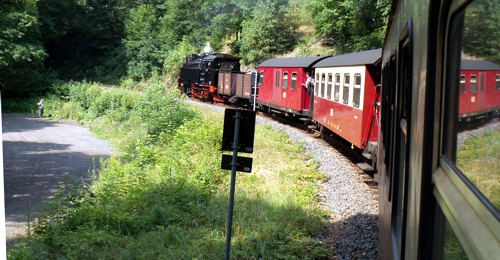


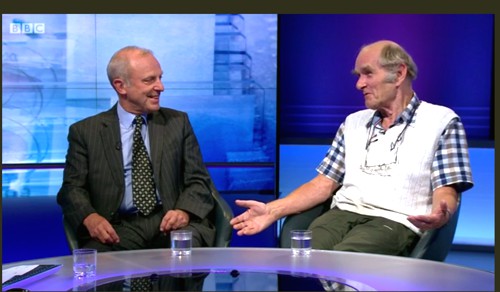
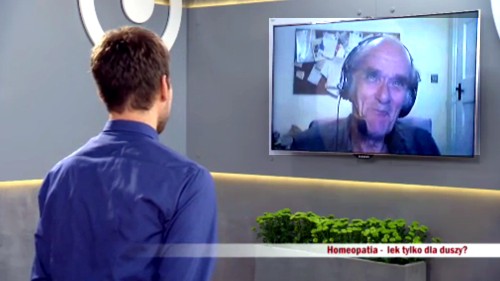
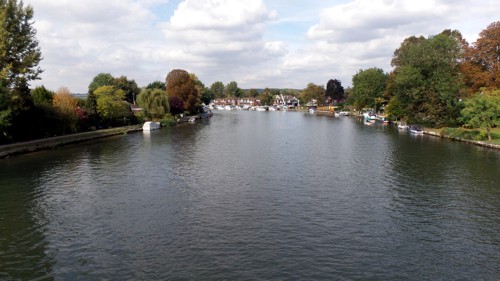
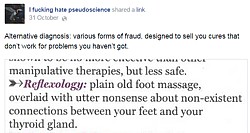
 Listen to the interview
Listen to the interview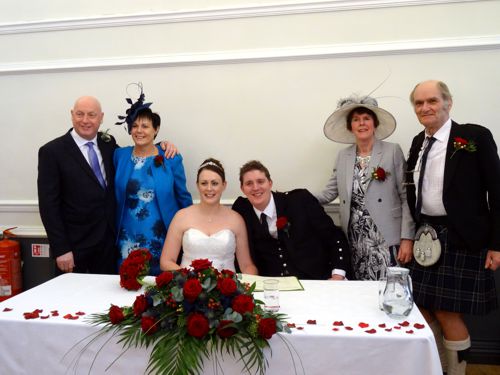



David a very lucid explanation of partial agonists/full agonist activity. Do you think this is a universal explanation, all ion channel receptors and GPCRs?
Thanks robbo. I presume you are referring to the video at 16 July 2014.
I really doubt whether anybody who didn’t anything about the field could follow it.
The answer to your question is that we’ve looked only at channels activated by glycine and by acetylcholine (muscle type), so all else is guesswork.
It does seem quite likely that something similar might happen with other ion channels. It seems inevitable that the agonist binding site will recognise the agonist and be most sensitive to the structure of the agonist. Therefore one might expect that the fact that some agonists are partial must be be recognised at the binding site., presumably because it the changes in the structure that are produced by full and partial agonists must differ close to the agonist binding site. The channel gate, being some distance away (on the molecular scale) can’t “see” what agonist is bound, yet the channel is held open for different fractions of the time by different agonists. An economical explanation for that is provided by the “flip” mechanism and by its generalisation, the primed mechanism (in which subunits are postulated to flip independently). The idea that the global conformation change that opens the channel is much the same regardless of the nature of the agonist has some plausibility based on the observation that haemoglobin seems to have only two conformations, regardless of whether the ‘agonist’ that produces the conformation change is oxygen or carbon monoxide.
Nevertheless, other explanations are conceivable. For example, it could be the case that the global open and shut conformations are sufficiently sensitive to the local structure at the binding sites that they depend on which agonist is bound. This seems unlikely to be an important factor, because of the old observation that the single channel conductance (how open the channel is) is independent of the nature of the agonist. And it is also inconsistent with the recent analysis that, within the context of the flip mechanism, the estimates of the rate constants for the opening and shutting reactions are almost independent of the nature of the agonist.
You ask also about GPCR and that is much more difficult. All the evidence cited above is dependent on observing the behaviour of single molecules in real time, and that isn’t possible with GPCR. In fact there is no well-determined mechanism for any GPCR that allows estimates of rate constants for any transitions. For a start nobody knows how to define the concentration of the G protein. One could plausibly speculate that the agonist produces a local conformation change at the extracellular end of the receptor, and that the time spent in the local conformation change is different for full and partial agonists. How that difference is transmitted to the intracellular end, and on to the transduction apparatus is entirely a matter of speculation. It would certainly be an attractive idea to postulate that the local conformation change is an analogue of the intermediate flip state, was produced for different fractions of the time by different agonists, and that the global conformation change that’s recognised by the transduction chain was an all-or-nothing transition, analogous to the open-shut transition. An agonist that was inefficient at producing the initial local conformation change would be less efficient at producing the global change, because less time would be spent in the flip state, just as for an ion channel. But as far as I know, there is no good reason to believe this explanation.
Interesting, the only information of GPCRs are the structural studies demonstrating the partial agonist of the beta1 receptor bind to different amino acid side chains than full agonists, so presumably alter the structure slightly differently. See Warne et al Nature 2011 469: 241.